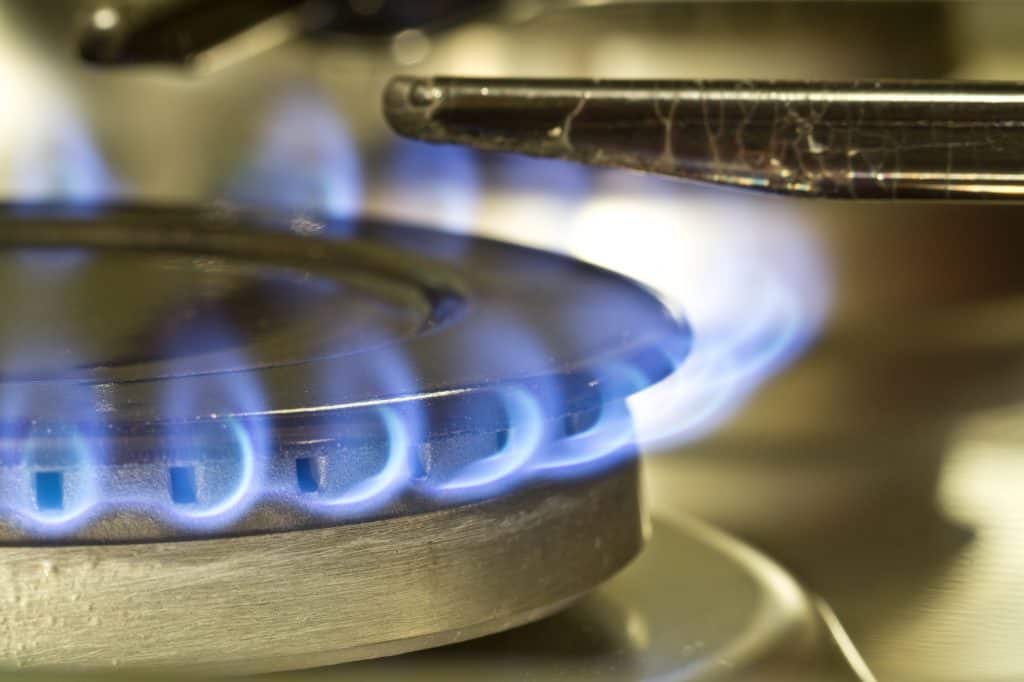Ever wondered why your propane tank seems to contain liquid? Has that sloshing sound inside your tank made you wonder whether something’s wrong? Don’t worry; it’s normal.
Your propane tank feels like it has liquid inside it because the propane in your tank is liquid. Pressurized propane turns into liquid at room temperature at 123 PSI and will stay that way until you open the valve in the tank. Depressurization causes that liquid to turn into gas, which will in turn power your propane gas appliance.
For the rest of this article, I’ll tell you how propane is stored and how it reacts under different temperatures. I’ll also share some tips on how to use your propane tank safely.
Why Is Propane Stored as a Liquid?
Propane is a type of fuel usually used in homes, farms, industries, and transportation. It belongs to the liquified petroleum gas or LPG family, alongside butane and certain other hydrocarbon gases.
According to physics professor Christopher Baird, propane is stored in metal tanks with the right amount of pressure – about 850 kPa (123 PSI) – so that it can stay liquid at room temperature. Liquid propane is odorless, colorless, and looks very similar to water.
Propane is stored as a liquid because it takes up less space and is more easily transportable this way. Liquid propane is about 270 times more compact than its gas form!
This info book from the U.S. Department of Energy suggests that a thousand-gallon (3,785 L) tank containing gaseous propane would provide a family cooking fuel for a week. In contrast, a tank of the same size holding liquid propane would provide enough cooking fuel for over five years.
How Does Liquid Propane Turn Into Gas?
Propane has a boiling point of -44° F or -42° C. In other words, at anywhere below this temperature, propane will be liquid.
Opening the valve on your tank will release the pressure inside and cause the liquid propane to come in contact with the air. Because outside temperatures are much higher than propane’s low boiling point, the liquid will instantly vaporize, creating gas.
It is this gas that will then provide energy to, say, your barbecue grill on a summer weekend with the family.

Steps for Using Your Propane Tank Safely
To use your household propane tank effectively and without any accidents, you’ll need to have a working knowledge of its components and functions. Knowing which part does what will help you become more confident in using your tank.
Here are some other things to remember:
Store It Properly
Government agencies and gas tank makers suggest several ways to store your propane tank properly.
First, they advise storing your tank in a flat, solid, and well-ventilated area outside your home and keeping it in the proper position at all times. Also consider storing it in a shady place out of direct sunlight (we wrote about that here)! Don’t store it indoors or in your vehicle.
Additionally, it’s best to check your tank for leaks (more on that below) before using or storing it.
To prevent exposing the tank to excessive heat, such as in summer, keep it in a shaded area. Remember that you should not place your tank in any spot that gets hotter than 120 °F or 49 °C.
While the cold isn’t as dangerous to your tank as extremely high temperatures are, make sure to store it where the temperature does not drop below −40 °F or −40 °C.
When you’re not using it for a long time, disconnect the tank from your grill or any other appliance and fully close its valve.
If you wish to know more about storing and transporting LPGs in general, you may check out the National Fire Protection Association’s Liquefied Petroleum Gas Code.
Watch Out for Leaks
Propane is odorless, but manufacturers add to it a chemical called methyl mercaptan for leak detection purposes. It’s this chemical that produces that “rotten eggs” smell associated with gas leaks.
Call your propane supplier or the fire department right away when you notice this smell coming from your tank.
Another way to check for a leak is to spray a simple soap and water solution on your disconnected tank and around the valves and hose. If any bubbles appear, your tank may have leaked or may be leaking.
Not all leaks are serious, but it’s best to contact a professional as soon as you think you spot one. However, there are things you can do to diagnose the leak yourself.
Don’t Touch It
It may look like water, but propane boils at a temperature much lower than the temperature at which water freezes. To say that it’s extremely cold is an understatement.
Liquid propane causes “severe, deep thermal injury” to exposed skin. Don’t touch it if you don’t want to suffer from extreme frostbite.
Final Thoughts
To summarize, propane is stored in liquid form and turns into gas when the pressure that keeps it in this state is released. That gas then burns to power appliances and engines.
Household propane tanks come with safety features, but it’s important to use and store yours properly to avoid any problems. If you suspect a leak, have a professional check it out immediately.
Sources
- West Texas A&M University: Why is propane stored in household tanks but natural gas is not?
- U.S. Department of Energy: Intermediate Energy Infobook
- Propane 101: Propane Liquid and Propane Vapor
- Propane 101: How Do I Check for Propane Leaks?
- U.S. Department of Energy Alternative Fuels Data Center: Propane Fuel Basics
- National Library of Medicine: The protection against and treatment of a liquid propane freeze injury: an experimental model
- National Fire Protection Association’s Liquefied Petroleum Gas Code (Accessed through GovTribe)
- AmeriGas: How To Store Propane Tanks
- Kauffman Gas: How to Winterize & Safely Store Propane Tanks
- U-Haul: What’s Inside a Propane Tank?

